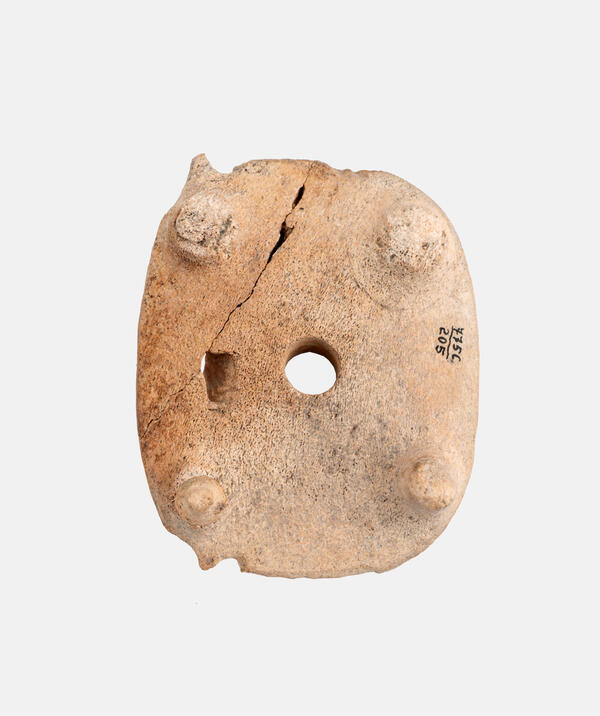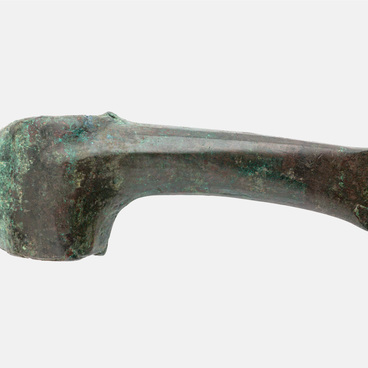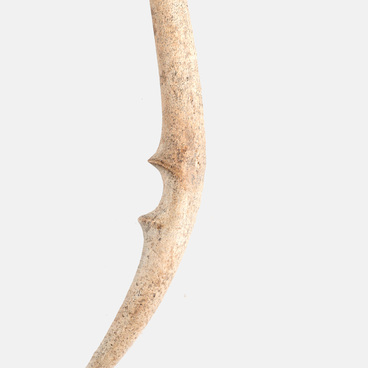The exhibition of the Chelyabinsk State Historical and Archaeological Museum-Reserve “Arkaim” presents a horn cheek-piece. A cheek-piece is a paired part of a horse harness, which connects the bits with the reins and head straps. It is used to control the horse by pressing on its muzzle.
The cheek-piece was discovered during the archaeological excavations of the Stepnoye burial ground in Plastovsky district of Chelyabinsk region by the expedition of the “Arkaim” Museum-Reserve led by Dmitry Zdanovich. Grave pit 13 is one of the largest on the site of the multi-grave mound 4. The chamber ceiling was supported by a pillar. The floor was covered with numerous remains of sacrificial animals, including an entire skeleton of a dog. Two children about nine years of age were buried in the pit, placed parallel to each other, heads to the north, crouched on the left side. The finds in grave pit 13 included ceramic vessels, a shield-shaped cheek-piece made of horn, items made of wood with metal staples, stone tools, 13 arrowheads made of stone, bone and horn, a string of silver beads, animal anklebones, and parts of a compound bow.
The shield-shaped cheek-piece of subrectangular shape made of elk antler has monolithic spikes and a separate bar. The thickness of the shield is 0.3 centimeters at the edges and 1.3 centimeters around the central hole. The figured bar has well-defined lateral projections. It is separated from the shield by a ledge. At the base of the bar — symmetrically to the central hole of the shield — is a rectangular hole of 1×0.2–0.4 cm. The spikes are monolithic: on the shield they are conical and blunted; on the bar — shaped, with carefully worked out profile of the “head”. The obverse and reverse surfaces of the cheek-piece differ greatly in the way of treatment — the obverse one is well polished.
Children’s burials of the Sintashta culture show almost all types of Sintashta weapons (arrowheads, spearheads, bronze axes, parts of a compound bow and horse harness). The exceptions are chariots and bone armor. Researchers assume that weapons could point to the gender of the deceased boys.
Cheek-pieces are the most widespread and the most
important source for studying the chariot complex. The shield-shaped
cheek-pieces were replaced by the rod-shaped ones, which allowed to better
control the horse when riding. The cheek-pieces went out of use in the second
millennium AD.





